- October 17, 2020
- Posted by: CENTERSPREAD
- Category: Uncategorized
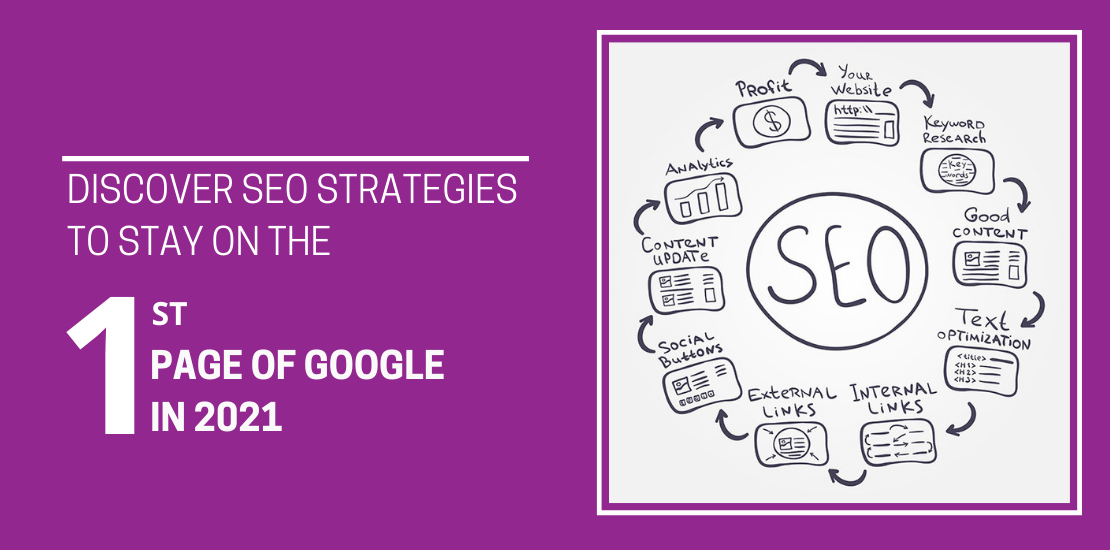
SEO is a fast paced & dynamic process, which requires you to be well informed & well versed with the latest trends. Because if you are not, it might become frustrating & overwhelming. SEO has become more complex as we move forward because of the algorithmic changes & technological advancements that Google undergoes. Not only this, but the pandemic has also caused a paradigm shift in the world of SEO. In this article, we will not only be focusing on the latest trends. But simultaneously sharing some actionable SEO strategies for 2021 that you can implement immediately and see a boost in your rankings.
1. Core Web Vitals & Page Experience
Page Experience is crucial if you wish to retain users on your website. Therefore, it should come as no surprise that Google also focuses on this attribute. We all know that Google is constantly improving and reinventing itself to cater more effectively to its users. They are planning to roll out a new algorithm update in May 2021, focusing on page experience as a ranking signal.
A brief summary of this update is that Google will be using Core Web Vitals along with Mobile-friendliness, HTTPS Status, Safe Browsing and intrusive interstitial guidelines as ranking signals.
You must be wondering what is Core Web Vitals?
Core Web Vitals is a combination of 3 attributes shown in the screenshot below:
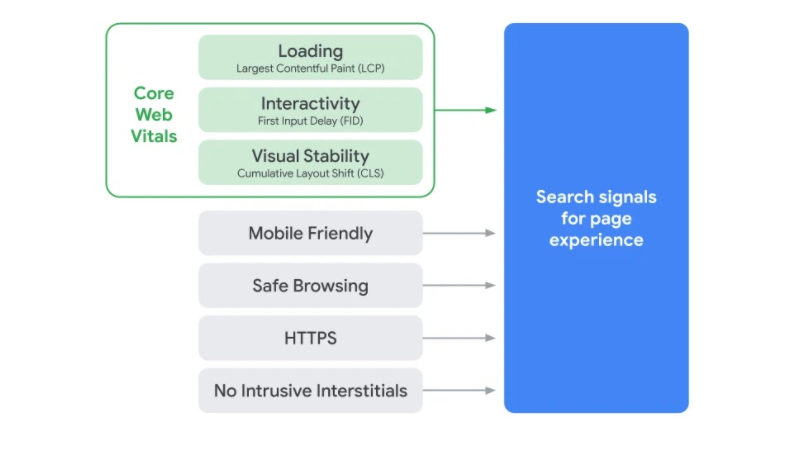
SEO pros remain divided about the impact of this update on search results. But we firmly believe that since Google has given us such an early heads-up, we should be taking measures to prep for this update roll out.
Now let’s move to the interesting part. Let’s check how does your website fare against Google’s measure of page experience. Google rolled out this feature in Search Console, earlier this year.
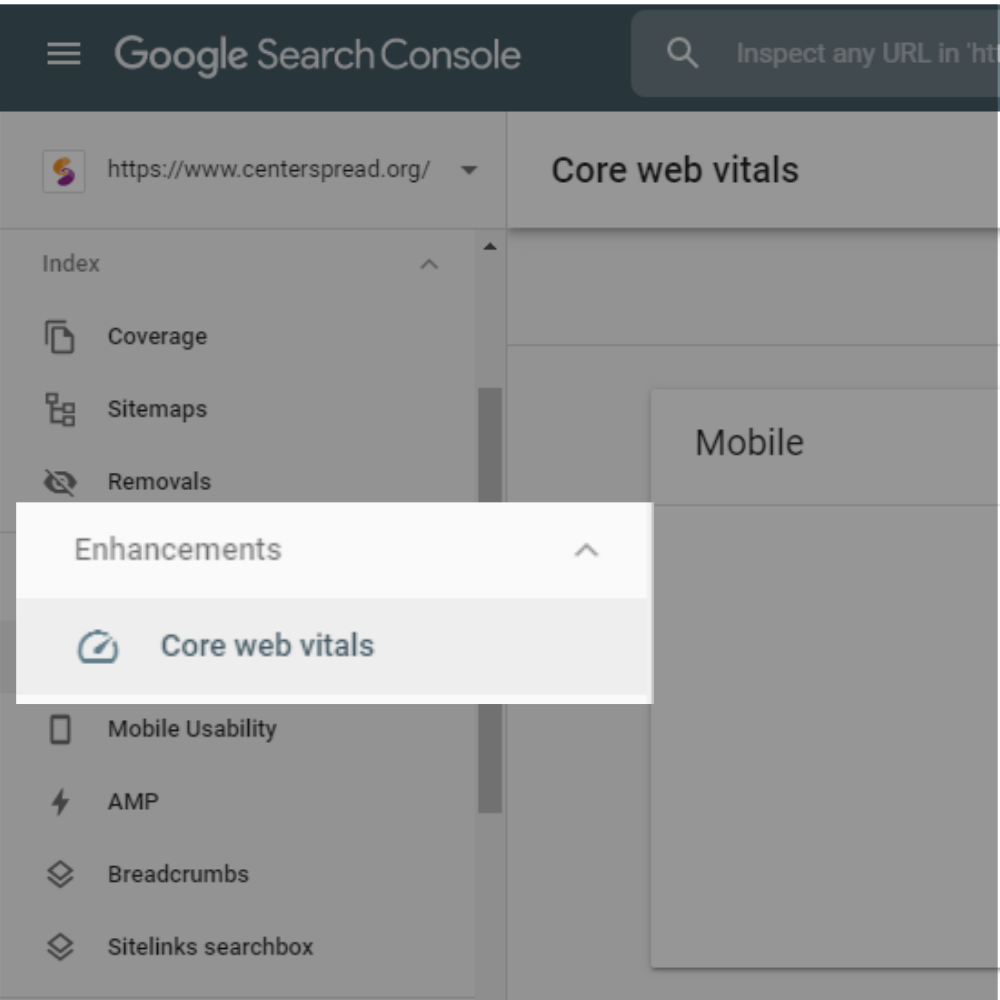
This feature uses PageSpeed Insights and Lighthouse to check different attributes and then prepares an aggregate score based on the values.
The Page Speed Insight report shows field data, lab data, diagnostics and opportunities. See a snapshot of this tool in action. It analyzes both desktop and mobile versions separately and provides data and reports accordingly.
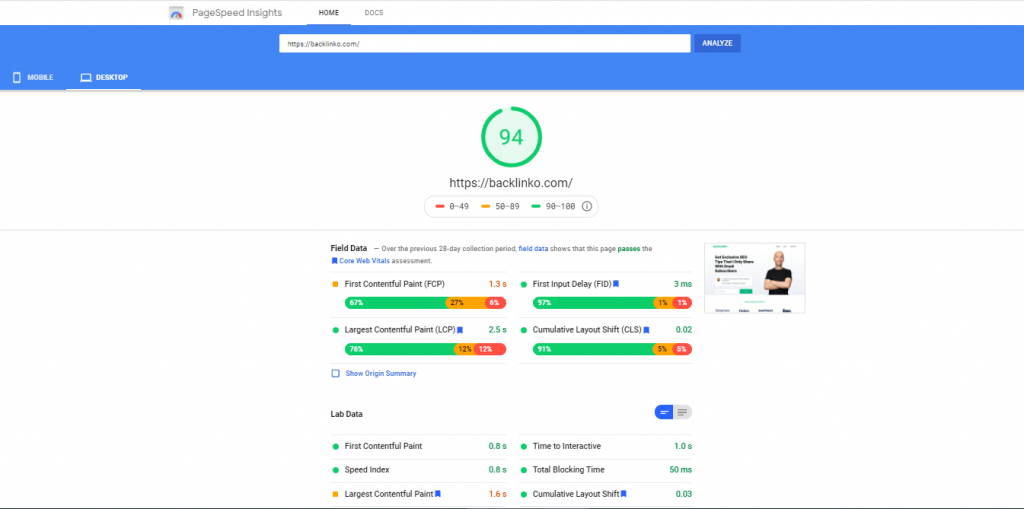
You can use the diagnostic measures highlighted in this report to fix the technical issues and improve your page load time and subsequently the time it takes for a user to interact with your page.
Besides, sorting the technical issues, improving user experience through design and layout changes is also helpful. You already know that RankBrain helps Google by carefully analyzing user interaction with a search result & then conveying its observations to Google. It mainly focuses on the time a user spends on a particular webpage. There are numerous ways in which you can enhance your user experience and thus retain people on your website to explore more.
Adam Riemer President at Adam Riemer Marketing says:
“Brands are going to need to forget about themselves and cater to their visitors.”
This means the secret to a great brand experience lies in the following 3 tasks:
- Content that provides value and answers your consumers/target audience’s questions and helps them solve their problems.
- A website that renders fast, is secure and responsive on all devices.
- No forced signups/pop-ups at every nook and corner of the webpage.
2. Google’s Passage Ranking
Ever since Google announced about “Passage Indexing”, a feature which will be rolled out towards the end of December 2021, it has caused quite a stir. Everybody is making their own set of assumptions and deductions regarding it. But we are here to clarify all the misconceptions that can lead you astray.
Google’s Martin Splitt has explained this update thoroughly in an interview with the Search Engine Journal team.
These are the main highlights:
- What is Google’s Passage Indexing? This isn’t exactly an indexing update but more of a change in ranking strategy on Google’s part. Therefore, the correct term is Google’s Passage Ranking as Martin clarifies. It means that Google will now include passages/sections of a web page as a search result query.
- Do you need to optimize your content for this update? No and any claims of Passage Optimization should be thwarted right away as it isn’t possible. The update is more about Google’s efforts at understanding the content at a more granular level. Besides this, Google has clarified that passage-based indexing will affect 7% of search queries across all languages when this update is fully rolled out globally.
- There is a huge difference between Google Passages & Featured Snippets. Featured Snippets are small paragraphs that answer a particular query and Google selects them from pages which are already ranking on the 1st page for a particular query string. Whereas Google Passages are going to be like blue links which will then direct users to the main page/content.
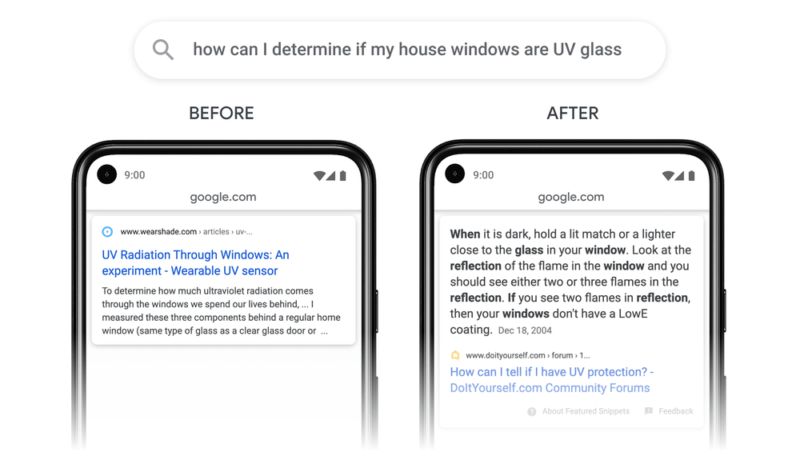
- Are header tags going to help rank for this update? No, Header Tags provide semantics and hierarchy to your content which is essential for your users to understand your content better. But they have nothing to do with increasing your chance to rank for Google Passages.
- Who will benefit from this update? Google has specified that “this is helpful for queries where the specific bit of information a person is looking for; is hidden in a single passage on a page, that is not necessarily the main topic of that page.” For example, you search for “How to keep the vacuum hose clean?”. The result will not only show links and videos that answer this question. But also include passages/sections from pages which focus on a broader topic. Yet, provide relevant information regarding this particular query. Google is basically giving webpages which have long form yet diluted content a chance to rank.
- Is BERT a part of Google’s Passage Ranking update? BERT helps Google at understanding the content better and therefore it is indirectly related to Google’s Passage Ranking update. Google uses a lot of complex and interconnected small systems to help them understand the content in a cohesive manner. BERT is just one such system therefore it does not share a direct relation with this update.
3. Focusing on User & Search Intent
Marie Haynes, CEO, Marie Haynes Consulting Inc., says that
“The SEO pros who will be successful in 2021 will be those who can truly understand how to meet a searchers’ needs.”
This means locking away the old & traditional means of doing SEO; beginning with keyword research. Yes, you heard me right. This pandemic taught us all that when everything is in a constant state of flux, keyword research will not be helpful at all. Truly understanding what your customer needs and then reorganizing your content, product and services to better assist them is the way to go forward.
Another smarter way to do this is by analyzing the onsite journey of your organic leads. It will help you determine what type and form of content your website users like to consume. Also, the order in which they seek information and the loopholes in your conversion funnel. There are many free as well as paid tools that you can use to gather this data. We have shortlisted few of them based on our experience.
- Google Analytics: This is an awesome and free tool that provides helpful data & insights. Not only this, but Google also provides free courses to understand this tool and use it to its maximum potential.
- Woopra: Another great tool that also has a free version. It allows you to track, analyze & optimize every customer touchpoint. From mapping your customer’s journey to analyzing trends for growth, they offer comprehensive reports. An amazing feature is their Retention Reports which show the time a user spends doing a particular task or use your product. It truly empowers you to understand your customer’s behavior and optimize your website accordingly.
- Inspectlet: This tool also has a free version. It records individual website visits and allows you to go through them, almost like looking over the shoulder of your audience. Sounds sneaky ?! With heatmaps, analytics and session recording, there is no missed opportunity to truly understand your customer’s journey.
4. Brand SERP Optimization & Knowledge Graphs
According to Jason Barnard, The Brand SERP Guy, Kalicube.pro.
“In 2021, the reality that entity-based search starts with Google’s confident understanding of who you are, what you offer, and what audience you serve will gain enormous traction.”
This means thinking your brand/business as one single entity. Then optimizing it holistically, for a great overall digital experience. You can do this by:
- Ensuring a complete & comprehensive organization markup.
- Using your content/knowledge base for Google Posts feature.
- Optimizing your Google My Business Profile with all the relevant information.
- Maintaining an active social media presence on relevant channels.
Let’s focus on each task in detail.
i. Ensuring a complete & comprehensive organization markup:
Google has a Knowledge Graph engine. It firstly connects information available online regarding a particular entity. And then serves it in the form of a Knowledge Graph Card/Panel on the right-hand side, during search results. An example of a knowledge graph card is shown below.
Using schema markup you can direct Google’s Knowledge Graph to gather all the relevant information about your business/brand easily.
If you are new to this term then let’s first understand what is Schema Markup?
Schema.org (often called Schema) is a semantic vocabulary of tags (or microdata) that you can add to your HTML to improve the way search engines read and represent your page in SERPs.
There are tools available that help you markup without hassle. You can do manual data markup using Google’s Structured Data Markup Helper. For plugins, Yoast SEO is a good choice for basic markup. For a more detailed markup, we personally recommend using WP SEO & Structured Data Plugin for WordPress. It is an effective and easy to use plugin that offers a lot of functionality for FREE.
PS: We are freemium lovers and tend to gravitate towards free plugins.
This plugin helps you markup your local business type (there are many different options available like restaurants, hotels, real estate, professional services, academic institutions, ect), About us Page, Contact Us page, blog posts, media objects, product pages, AMP pages, etc. To verify that your content has been marked up correctly, you can use Google’s Structured Data Testing Tool. This tool displays if schema has been correctly implemented or if there are any errors that need to be rectified.
ii. Using your content/knowledge base for Google Posts feature:
Using Google posts to promote your content and interact with your customers will help your local SEO efforts immensely.
You can create Google posts using Google My Business dashboard. There are normally 4 different kinds of Google posts including What’s New, Offers, Events & Products. The art of crafting the perfect post lies in driving an action through engaging content, interesting visual and a catchy call-to-action. Do specify date ranges while posting about offers.
Protip: According to Google, unless a post has a specific date range, all posts are archived after 7 days.
Make Google posts a part of your content plan and see the difference in your organic traffic. You can setup UTM parameters to measure the exact traffic you go through these Google posts.
iii. Optimizing your Google My Business Profile with all the relevant information:
Google My Business profile is the utmost important piece of digital real estate that you need to create for your business. Whether you are a brick & mortar store, or a consulting service, you need to have a GMB profile.
Since we have established it’s importance, let’s move on how to optimize it. The best way to do it is provide ALL THE INFORMATION. Yes, any piece of information that will help facilitate your customer in understanding your business thoroughly needs to be there. For a more detailed understanding and some cool tips, check out this video by Ranking Academy.
iv. Maintaining an active social media presence on relevant channels:
All businesses use different social media channels to promote their business. A few key pointers to help you up your game.
- Make sure your brand information is same across all channels. This includes your social media handle, URL, services, offerings, etc.
- Create content consistently. This is the most important strategy of all.
- Connect with your audience through timely managing your inbox messages and moderating & responding to comments.
- Focus on brand mentions, whether they are positive or negative and respond to them accordingly.
5. Optimize for Voice Search
The use of smart phones & smart assistants like Alexa & Siri are quite popular. Check out these cool stats based on different studies and research on the growing popularity of Voice Search.
- 36% of consumers own a smart speaker (Feb. 2019).
- 75% report using their smart speaker at least daily.
- Adobe recently found that a whopping 91 percent of brands are already making significant investments in voice.
- Almost all users (94%) consider voice technology easy to use. As they believe that it not only saves time but it has also improved their quality of life.
These statistics clearly reflect the importance of optimizing your business for voice search.
Good news is that if you are employing SEO best practices, it will work for voice search too. One important factor while optimizing for voice search is to focus on Long tail keywords & conversational words rather than typed words.
It is important you know how your audience speaks about your products & services. Long tail keywords are cheaper & tend to have better click through rates.
You can create a FAQ page with all the possible questions, your customer may/does ask. It will help you in voice searches & drive massive traffic to your website.
6. All SEO is Mobile SEO
We have already mentioned that mobile use is prevalent & most of the searches that take place are via mobile. Therefore, Google considers the mobile version of the website as the True version.
In order to optimize your website for Google’s mobile first index, you need to ensure that not only just content but design is also consistent across the desktop & the mobile version of your website. Some people tend to disable certain features in their mobile version for easy loading of the page. But it is not the correct way. Instead of removing features, we need to make the design attributes responsive. This means that the banner will have the ability to resize as per the device it is being viewed.
To test if your website is mobile friendly or not, there are many free tools available such as Google Mobile Friendly Test, which gives you a very comprehensive review of the possible errors & how to rectify them.
You can also check out the Mobile Usability Report at Google’s Search Console. It evidently displays pages which are not mobile friendly & how to rectify them.
6. Evergreen In-depth Content
Ron Lieback, CEO/Founder, ContentMender, said one trend to help you outrank your competitors will be consistently publishing longer-form content that appeals to Google’s E-A-T guidelines, as well as emotion.
BuzzSumo founder Steve Rayon says:
This indicates that long form content needs to be evergreen & authoritative. Writing articles on a topic that resonate with you receive engagement immediately. Secondly provide as much detail as possible with references & examples as it proves that you know your stuff.
It’s even better if you can quote your own experiences & examples. People love to read & engage with content that displays the story of a human being & not an encyclopedia. Therefore, it is important that you understand your audience & write for them & not TO THEM.
LSI keywords help your content in ranking, as these keywords or phrases strongly associate with your page’s topic & provide Google hints about the context of the article.
For example let’s say you published an article on Digital Marketing. LSI keywords would be terms like:
Digital Marketing strategy, Digital Marketing company, Digital Marketing services, Digital Marketing projects
Now how to find the most appropriate set of LSI keywords. Google’s Keyword Planner is an excellent resource. As it not only tells you the relevant keywords, but also their volume. This will give you a clear insight on choosing the best possible keywords.
There is also another nifty little tool called LSI Graph. It allows you to generate a list of LSI keywords that you can add in your content & optimize it easily.
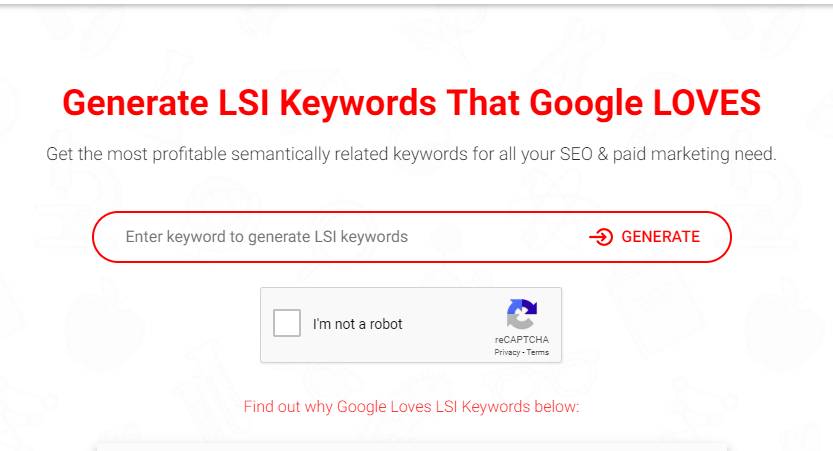
7. Video Content
Consumption of video content has increased savagely over the past few years.
Research shows us clearly. In their 2020 report, Wyzowl recorded the following statistics:
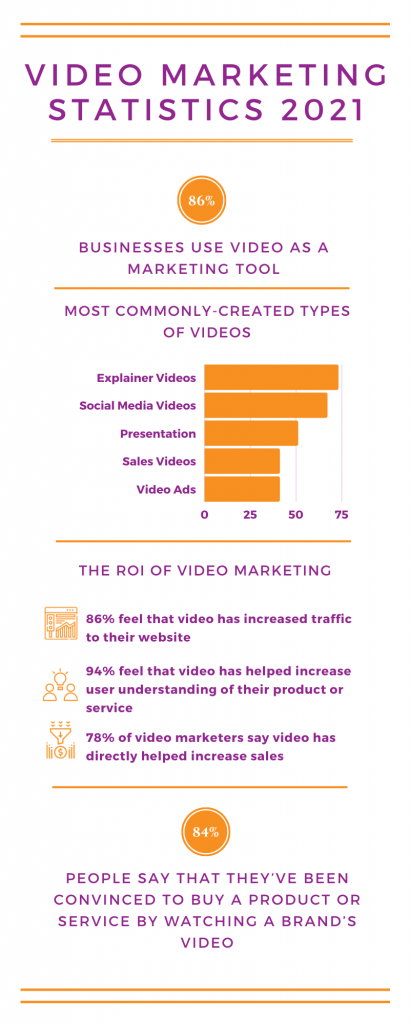
You don’t need to make elaborate/expensive videos. There are free tools such as Canva, Biteable and Wondershare that help you create short, interactive videos, which bring in engagement. Your main focus should be on how to distribute these videos effectively.
Harness the power of YouTube and get insane reach for your video content. Since Google owns YouTube, it prefers showing YouTube results often. In fact, now Google includes video snippets, if they match the keyword in the search query.
One protip is to embed these videos in your long form content. This would increase the dwell time of your content considerably. More dwell time means rank boosting. Higher rank means higher traffic.
Concluding, to stay on the 1st page in 2021, you not only need to focus on behavioral SEO but incorporate strategies that rely on insights & research.